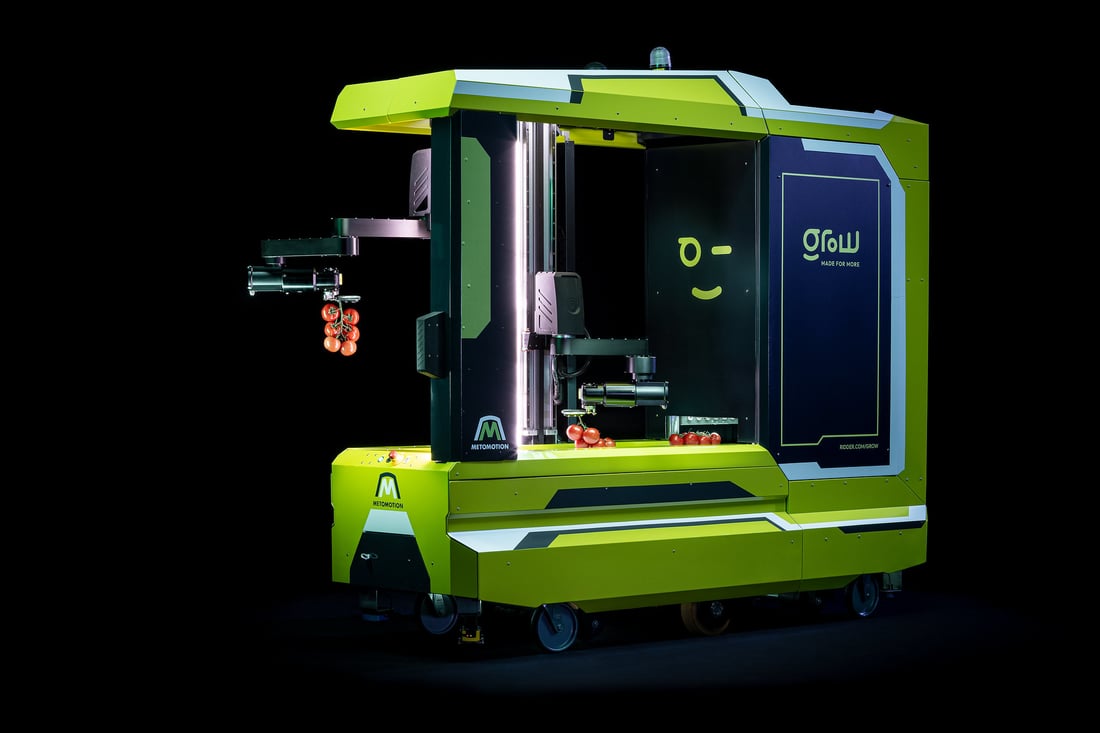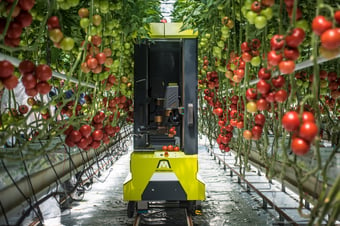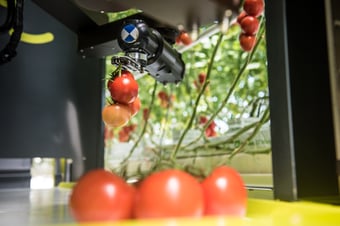In horticulture, where margins are slim, innovations like the GRoW tomato harvesting robot can help to distribute resources in a targeted, data-driven way, saving grower’s energy, resources and money - without compromising on crop quality and productivity.
In this blog, Ridder shares 5 of the most surprising statistics about the GRoW tomato harvesting robot and what robotics can do to future-proof tomato growing greenhouse operations.
1. The GRoW robot can work 24/7
As an ‘always-on' robot worker, the GRoW automated harvester is available to work 24/7. GRoW saves time and money, and brings a new level of control to the picking process, whilst allowing more efficient and rewarding deployment of human labour.
Unlike traditional labour, robots aren’t limited by working hours, fatigue or focus. GRoW can work as long as its battery lasts, and thanks to a modular, interchangeable battery pack - GRoW doesn’t even need to be taken offline to charge. In fact, GRoW’s batteries can be removed and re-charged while picking, which means he does not need hours to be retired to be plugged in to charge.
2. GRoW harvests more than fruit - he also harvests data
When growers invest in GRoW, they are getting more than an extra pair of picking hands. Every tomato and truss GRoW observes and harvest is automatically photographed, logged and stored in a cloud database that growers can access and use for analysis to inform and optimise a data-driven growing strategy and yield prediction.
GRoW processes over 1,000 images per minute during operation and has an accuracy of 100% when it comes to determining the colour grade of the tomatoes. Whereas the human eye is subjective and may pick a slightly different variation on the green-to-red tomato colour scale each time, robots are programmed to deliver accuracy and precision, making them more reliable and consistent than the human eye. Not only is this good for greenhouse data mining, it also contributes to the consistency of the final harvested product for suppliers and customers.
3. Robots can increase productivity exponentially
An ongoing struggle for tomato growers is the ability to attract and keep laborers in the workplace. Continuity of operations can be affected and in some cases, tomatoes spoil on the vine if not picked in time. With GRoW robot this risk can be eliminated.
By introducing tomato harvesting robots to the greenhouse, the amount of human labour needs can be reduced with 80%.
4. Use of industrial robots increases by 30% every year
At Ridder, we know that robotics will revolutionise greenhouse growing and that the industry is at the very beginnings of unlocking the possibilities of robot integration. But global trends are already showing that robotic innovations and technological developments are picking up speed, and automation is already becoming more widely adopted.
The use of smart, autonomous robots in the greenhouse has been a dream for many growers for decades, and now it is beginning to turn into a reality. In fact, the use of industrial robots is already increasing by 30% every year.
One thing that is clear is the general direction of robotics in the greenhouse. It is no longer a case of if robots will be used to harvest crops - it’s now a question of when they will be deployed at mass scale.
5. Faster training and long-term labour
Training new human workers can be a lot of work, and a costly process for growers. The onboarding period for traditional labourers can take up to two weeks, and in some cases longer for them to begin to work at a pace that can match their ‘co-bot’ colleagues.
The GRoW tomato harvesting robot is a truly plug-and-play solution, once programmed it is ready to work without any additional training. What’s more, GRoW robot is the most loyal employee with no employee turnover, he remembers everything he is told, every tomato he harvests and provides 100% employer loyalty.
For more information and statistics about the transformative power of GRoW harvest robot check out the GRoW factsheet on robotic vs. human labour in the greenhouse.




